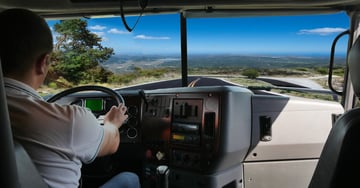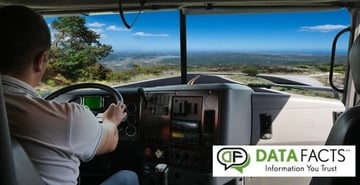 HR is responsible for many important actions regarding a company’s employees. One of the main risks to an organization is employing unsafe drivers. An employee who operates a vehicle as part of their job opens the business up to potential lawsuits and fines in several ways.
HR is responsible for many important actions regarding a company’s employees. One of the main risks to an organization is employing unsafe drivers. An employee who operates a vehicle as part of their job opens the business up to potential lawsuits and fines in several ways.
There are over 100 million people driving for work-related activities in the United States. If you employ delivery people, traveling sales staff, on-site repair employees, or any other team members who drive as part of their jobs, this information applies to you.
Driving is the most dangerous thing employees do daily. 40% of worker fatalities in the Oil and Gas industry are from highway vehicle crashes, and 25% of all worker fatalities in the Construction industry are from vehicle-related crashes (source: Dept of Labor Statistics). In a recent study by SambaSafety, we found that only 50% of drivers are completely free of red flags in their backgrounds. The other 50% contained at least one issue in their history that would make it risky to employ them. HR can play an integral role in pinpointing both safe and unsafe drivers by designing a good driver screening and monitoring process.
Why Is Driver Screening Important?
Employing drivers opens your company up to liability from that person’s driving history. What if he has a DUI or other serious moving violations? What if his driver’s license is expired? Your business could end up dealing with costly worker’s compensation, days lost, legal fees, insurance deductibles, and future premium increases.
Hiring drivers in any capacity calls for a documented, consistent plan. Take these steps to thoughtfully build a screening and monitoring program so you can protect the company and lower the risks.
Understand Drivers Are Unique Employees
Stakes are higher with drivers than other employees. Unlike employees who work in a warehouse or sit in a cubicle, drivers are operating cars, vans, and trucks. If he or she is under the influence or loses focus, there could be drastic consequences. Wrecks, damaged property, personal injuries, and even fatalities can result from driver employees. In addition, drivers who lose their licenses, or receive excessive tickets for infractions, open the door to company lawsuits or fines that could harm or even destroy your organization.
Create A Pre-Hire Screening and Post-Hire Monitoring Program
With your driving positions in mind, craft a screening and monitoring policy specifically geared toward drivers. In addition to your normal employee screening reports like criminal history searches and employment verifications, include:
Motor Vehicle Records (MVR). An MVR is the first step towards hiring safe, responsible drivers and the first line of defense if there is ever a negligent hiring claim on an employee who drives company vehicles or who drives on company business. By performing an MVR search, employers minimize the risk of hiring an employee with a history of unsafe driving who may put other employees, customers, or the public at risk.
A motor vehicle records search (available in all 50 states, although a nationwide MVR search does not exist) uncovers administrative information like the type of license a driver holds, issue and expiration dates, and any restrictions on the license. The search will also uncover illegal information like violations, disciplinary actions, convictions, revocations, suspensions, and accidents. 80% of license suspensions result from administrative reasons.
Drug screening. A drug user slipping through your driver screening process can end up causing significant and disastrous issues. Stringent drug testing such as urine, hair, or saliva testing are essential in avoiding the chances of dealing with drug-induced accidents.
The first step of a successful driver screening program is a pre-employment background check. Once they’re hired, they’ll need to be monitored. This way, if they commit infractions or lose their license, you’ll find out quickly.
Many organizations only monitor their drivers quarterly or yearly, which leaves a hole called the “visibility gap”. What if he loses his license in August, and you don’t screen until November? That’s 3 months that your company is open to risk! Taking the human error factor out of the driver screening process and monitoring driver activity daily is a smart best practice. An automated driver monitoring solution accomplishes this goal.
Set A Consistent Screening Policy
Screening drivers at certain times of the year or only in certain cases leave your organization open to risk. Your driver screening and monitoring policy needs to be written and clearly understood by everyone involved. Every driver should go through the same uniform process.
Failing to properly screen and consistently monitor drivers is a risky move. Implement written standards and document every aspect of the screening process. Following these guidelines helps decrease the chances of dangerous or unlicensed drivers being on the road as your employees.
Other posts you might be interested in
View All Posts
Why HR Should Add Driver Screening to Their Hiring Process
Read More
Driver Screening: Is Your Company's Biggest Risk on the Road?
Read More
